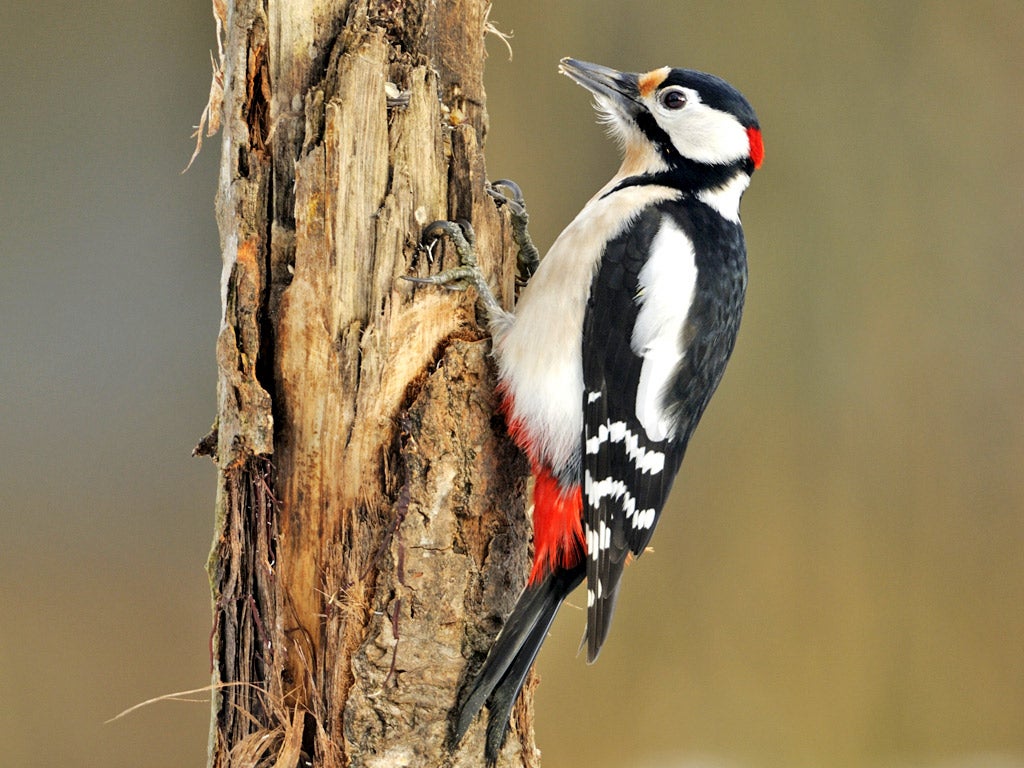Woodpecker may hold secret to human beings avoiding brain injuries
Birds' bone structure could shape design of new headgear

Being a headbanger doesn't have to be a damaging way of going about things, new scientific research on woodpeckers suggests.
When they rapidly "drum" on tree trunks, the birds experience enormous stresses to the head that would gravely injure humans, yet they are completely unscathed.
Now Chinese researchers have investigated how they protect their brains from impact damage while pecking wood, in the hope of finding new approaches to prevent and treat human head injury.
Head trauma is one of the major causes of death across the world. Brain injuries make up an estimated 15 per cent of all fatalities and disabilities – and represent the leading cause of death among young adults.
Brain injuries may be caused by an impact or a sudden change in the velocity of the head.
However, woodpeckers experience no ill effects even though their beaks hit tree trunks at six to seven metres a second, with deceleration producing enormous forces of up to 1,000G.
A study – led by Yubo Fan of Beihang University in Beijing and Ming Zhang of Hong Kong Polytechnic University – examined how the birds did it, concentrating on great spotted woodpeckers, which occur across Eurasia and are the commonest species of the bird in Britain. Their results – published today in the online science journal PLoS ONE – show they have complex shock absorbers inside their skulls.
The researchers used high-speed video cameras and took scans of the birds' heads to examine bone structure.
They found details of the cranial bones and beak – such as the "sponginess" of the bone at different places in the skull and the unequal lengths of the upper and lower parts of the beak – were crucial for preventing impact injury.
The researchers concluded that the shock absorption system was not based on a single factor but was a result of the combined effect of different morphological features.
They suggest this combination may be useful in guiding design for new protective headgear.
The good news in your garden
Garden bird feeders are attracting almost 50 per cent more species than in the 1970s, says the British Trust for Ornithology. Numbers have fallen for some of the most common species, including sparrows and starlings, but more gardens have been visited by species such as long-tailed tits, woodpigeons and greater spotted woodpeckers.
Join our commenting forum
Join thought-provoking conversations, follow other Independent readers and see their replies
Comments
Bookmark popover
Removed from bookmarks